I went to Germany for two weeks to see Christmas markets and more. Here’s what I learned.
“Your flight has been canceled.”
This is a text no one wants to receive as they finish smooshing sweaters, mittens and boots into their suitcase in the hours before heading to Chicago’s O’Hare International Airport.
But that’s what I got, so I quickly reached out to my cousin, Debbie, whom I was traveling with to Germany. The plan was to fly out of Chicago at 9:30 p.m. Dec. 3, then have her daughter, Laura, and Laura’s husband, Connor, pick us up at the Munich airport at 3:30 p.m. Dec. 4 (flying east and gaining seven hours).
But a once-in-a-century snowstorm dumped 18 inches of snow on Munich and shut the city down over the weekend. German airline Lufthansa sent us — and hundreds of others heading across the pond — to the Frankfurt airport instead. They promised a connecting flight to Munich, but we left the runway at around midnight without anything confirmed.
There definitely are angels among us.
With no direction about a connecting flight as we exited the plane, Debbie and I headed for the nearest Lufthansa help desk. It was darkened without a soul in sight.
Luckily, some travelers from Chicago who frequently visit relatives in Germany took us under their wing, leading us to an active help desk. We waited nearly three hours to change our connecting flight to a train pass for Nuremberg. And when we went to find our suitcases, mine was lost — an apparently common occurrence in Europe.
After a two-hour train ride in winter darkness, Connor picked us up for an hourlong drive to their home in Grafenwöhr.
Grafenwöhr is in eastern Bavaria and is home to a U.S. Army Training Area, where Connor is stationed. They live just off the base, in a cozy townhouse near the small city’s center.
Debbie and I visited the base the day after arriving, and the wet snow hanging from tall pines was magical. The base is basically a town, with a gas station, post office and lots of housing. About 3,000 are stationed there.
Later, taking a walk in Laura’s neighborhood, I was struck by the narrow, winding and slightly hilly roads. Buildings are made of cement, with pitched roofs and most painted in pastel colors.
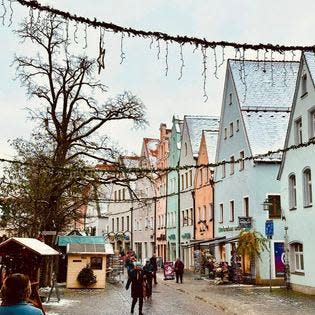
We visited the grocery store, where I was surprised at the reasonable prices. I bought pastries for breakfast, soda, fruit, toothpaste and a toothbrush, deodorant (remember my missing luggage?) for a whopping $12 euros. That’s the equivalent of about $11 in the U.S.
But Laura reminded us to bring reusable sacks. Store clerks in Germany do not ask you if you prefer paper or plastic — they expect you to bring your own. And don’t expect a smile or small talk from the cashier or the folks behind you in line. People in Germany were never rude, but businesslike and not interested in sharing unnecessary words with visitors.
Connor says German people tend to be rule-followers — reserved and content with their lives — rarely exhibiting emotions. No bear hugs from these folks, but at least they are polite. Most spoke enough English to communicate with us.
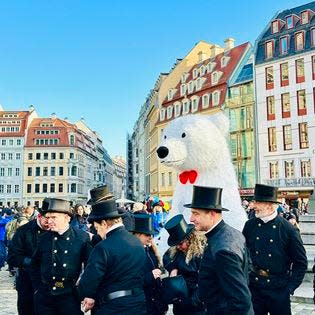
In addition to spending time with Laura and her family, Debbie and I were excited to visit Christmas markets during our stay.
Before this trip, I had no idea there were so MANY markets, not only in Germany, but throughout Europe. It would be impossible to see them all in one visit.
Fortunately, my suitcase arrived on Wednesday, so I could wear my warm boots to the markets.
We visited several markets, but my favorite was in Dresden, about a two-hour drive from Grafenwöhr.
Most markets are held in the “old city centers” of cities, where the centuries-old buildings still stand, as well as the cobblestoned town squares. Dresden is one of the oldest and largest market. The architecture in Dresden is amazing, and many of the buildings are blackened from bombing during World War II.
Markets are set up with small, usually wooden booths, with vendors selling food, drinks and a variety of items to buy, such as ornaments, knitted hats, paper stars, candy and gingerbread cookies.
A highlight of many markets is the “gluhwein,” or mulled wine, which is served warm in specialty mugs. You pay around 10 euros for the drink, and then can either keep the mug or return it for a 5-euro deposit. Many people collect them from the various markets, and I brought home a few myself! The warm “eierpunsch,” or German spiked egg punch (similar to eggnog), was also delish.
At night, everything is lit up, and many markets have ferris wheels and merry-go-rounds.
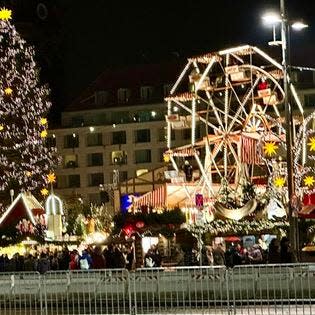
Our Airbnb for the night was a quaint little place in the country. The owner was a woman we guessed was from Russia, who wanted to charge more because my cousin had left a nightlight on during the night. She claimed that cost her more! That didn’t fly with Connor.
We went back to see the market the next day, and it looked so different! There were several cruise ships in the river, and a ton of tourists walking around.
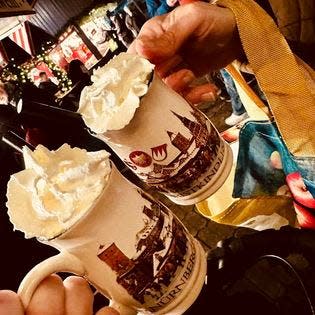
Sunday night, Laura and Connor took us to a small country market. It had a medieval theme and was less Christmassy, but equally pretty. This one was built around an old castle, with beverages and food served within the castle’s courtyard.
We also toured the Flossenbürg Nazi Concentration Camp.
One thing I really wanted to experience while in Germany was a concentration camp, and this smaller memorial is about a 40-minute drive from Grafenwöhr.
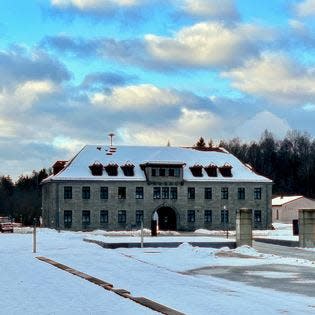
Flossenbürg mostly housed political prisoners who worked in the granite mines, hauling heavy rocks to be used for the giant colosseum Adolf Hitler had planned for Nuremberg. It didn’t matter that the inmates were wearing skimpy clothing and shoes in the cold or carrying granite uphill with malnourished bodies. If they struggled or became sick, prisoners were put before a firing squad.
Many prisoners were forced to march from larger camps in northern Germany and Poland near the end of the war, when the Nazis were evacuating places like Auschwitz.
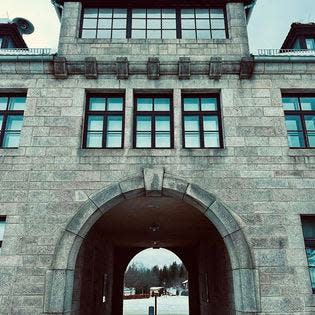
More than 30,000 people died or were killed in this small camp, which didn’t have gas chambers but did have a crematorium. Pretty humbling to see the “pyramid of ashes” near the crematorium and walk through the building where prisoners were sent when they first arrived to have their heads shaved, shower and exchange their clothing for striped prison suits.
Somber, but interesting to see the letters they wrote, and crude utensils or cups they fashioned with tin they found.
Later, townspeople claimed they didn’t know what was going on at the camp. Most of its buildings were torn down, and for decades no one discussed what had happened. Businesses moved into the space until the state bought the land in the mid-1990s and created the memorial. I was struck by the rows of houses where residents essentially have a death camp in their back yards.
Staying in a lighthouse: What’s it like to spend a week in a historic Door County island lighthouse? Reporter shares her experience.
Too soon, it was time for us to head back to Wisconsin.
Debbie and I took a train from nearby Regensburg to the Munich airport for around $20 each. The train made many stops along the way, with people hopping on and off. Wish we had this in the States.
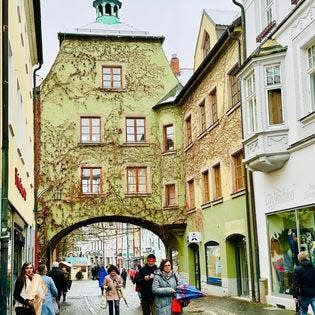
There’s not much of a car culture in Germany, where gas costs the equivalent of $9 a gallon.
I’m amazed at how much Americans take our cars, our big homes and yards — all the wide-open space — for granted. We did drive through areas of the countryside in Germany, but towns themselves are tightly packed together.
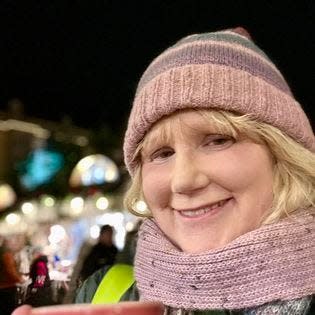
After most vacations, I think about what I’d like to see when I go back! In my dream world, I think I would make a city such as Munich or even Prague, in the Czech Republic, a home base and take trains to visit Christmas markets throughout that part of Europe. I’d also travel farther south to see mountains.
Now, it’s time to print pictures, work on a scrapbook and smile at all the good memories.
Contact reporter Patti Zarling at pzarling@gannett.com or 920-606-2575. Follow her on Twitter @PGPattiZarling or on Instagram @PGPatti.
This article originally appeared on Manitowoc Herald Times Reporter: Wisconsin reporter travels to Germany to see Christmas markets
